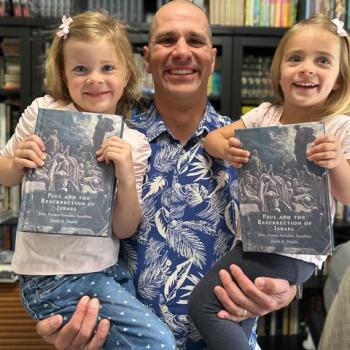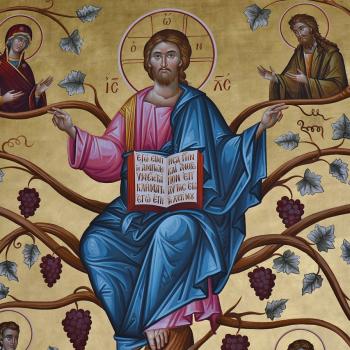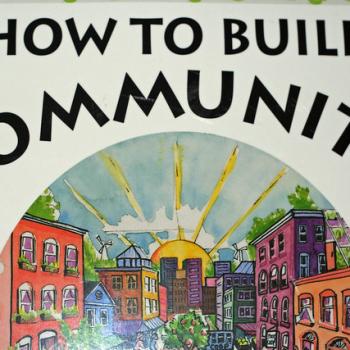
What are Our Metaphors for Spiritual Life?
Do you have any chosen metaphors for spiritual life?
Spiritual life is, by its very nature, beyond our ability to understand it. Does anyone truly grasp and appreciate all the complexities and concepts of spiritual life? Each of us relies on our own metaphors to help us recognize the spiritual life within us.
Some of us see spiritual life as a crutch or a thermometer for taking our spiritual temperature. Other people approach spiritual life as a divine checklist or a roadmap for living. There are people who view spiritual life as pie in the sky when you die, bye and bye.
I know people who seem to see spiritual life as a sort of vending machine they go to when they need something. Some people see spiritual life like gambling, either hedging their bets or rolling the dice.
There are even people who approach spiritual life like fire insurance, saving them from fiery eternal punishment.
People have many metaphors for God. Some of us see God as an old man with a long white beard, checking to make sure no one is enjoying life too much. We may think of God as a father, a son, and a spirit. Some people experience God as a voice or as a way of thinking or how they feel. For some of us God is a flame of fire or the taste of bread and wine.
Our metaphors for God are often grounded in particular events or experiences. They may grow from the time we were baptized or when we felt especially close to God.
We may find God in the metaphor of a friend’s face or a specific location. I even know people who hear the voice of spiritual life in stillness.
Discovering Our Metaphors for Spiritual Life
The metaphors for spiritual life which resonate with us often tell us a great deal about ourselves.
The metaphors which draw us in have power and meaning for us. Many of us begin understanding spiritual life through other people’s metaphors. We may have inherited them or heard them from other people when we were young. People may have explained things to us in metaphors and we accepted them as true.
Those of us who received other people’s metaphors for spiritual life often get to a point when we begin to question them.
It is important our metaphors for spiritual life connect with us as deeply as possible. Some of us are drawn to tangible metaphors we can experience with our senses. Other people prefer conceptual, visionary metaphors which float just beyond our reach.
Our metaphors for spiritual life may be primarily emotional or particularly analytical. We may see spiritual life as being about community or focused on our own individual internal processes.
Some people see spiritual life as guiding them through specific steps in a clear direction. Others of us live into a metaphor of openness, flexibility, and developing newness.
The time and effort we put into discovering our metaphors for spiritual life benefits us. The more deeply we explore and the more clearly we see our own metaphors, the more they can teach us.
What metaphors for spiritual life draw you into deeper understanding?
We get to know ourselves better by understanding our metaphors for spiritual life. As we gain insights we see more clearly why we choose the metaphors we do.
It can be a challenge for us not to become too closely wedded to our metaphors for spiritual life. People can become so enmeshed in their metaphors they put more energy into defending them than understanding them.
Going Beyond Our Metaphors for Spiritual Life
The story of spiritual life is filled with metaphors, as well as with arguments over competing metaphors.
We can be so attracted to our own metaphors for spiritual life we forget they are metaphors.
There are many benefits to metaphors. They help us explain and illustrate what we believe to other people. Metaphors are usually more accessible than complex literal explanations. They allow us to see new aspects of the worlds they describe.
One challenge of metaphors is they encourage us to become heavily invested in the stories they tell. It is easy for us to convince ourselves we have found the metaphor which best captures spiritual life.
We need to remember, no matter how great our metaphors might be, they are not spiritual life. Our reflection, insights, and questions may reveal aspects of spiritual life which are new to us. We may begin to understand things about spiritual life which have eluded us in the past.
Our metaphors for spiritual life are still metaphors, not a complete picture of spiritual life. There is always more.
Beginning With Our Metaphors for Spiritual Life
It is essential for us to appreciate whether we are seeing spiritual life clearly.
Our metaphors for spiritual life allow us to see in new ways, though there are still aspects which are obscured.
The metaphors we choose to understand spiritual life are imperfect images. They draw us in and persuade us with their power and meaning. Metaphors can highlight things we might have missed. They also make it more challenging to recognize the value of other aspects of spiritual life.
The more freely and openly we share our metaphors with other people the more clearly we can see.
Like the metaphor of the blind men and the elephant, we share our experiences. Rather than arguing about who is right and who is wrong, we gain insights from each other.
Our metaphors for spiritual life become helpful tools rather than stumbling blocks or arguments.
My friend Brenda Hanley and I host a conversation on Twitter which focuses on a word to live by each Sunday. Please join us on Sunday, June 17 at 6:00 PM Pacific Time as we explore metaphor. We will be using the hashtag #WordsToLiveBy.
What are our metaphors for spiritual life?
How can we begin this week to go beyond our metaphors for the world around us?
[Image by h.koppdelaney]
Greg Richardson is a spiritual life mentor and leadership coach in Southern California. He is a recovering attorney and university professor, and a lay Oblate with New Camaldoli Hermitage near Big Sur, California. Greg’s website is StrategicMonk.com, and his email address is StrategicMonk@gmail.com.

















